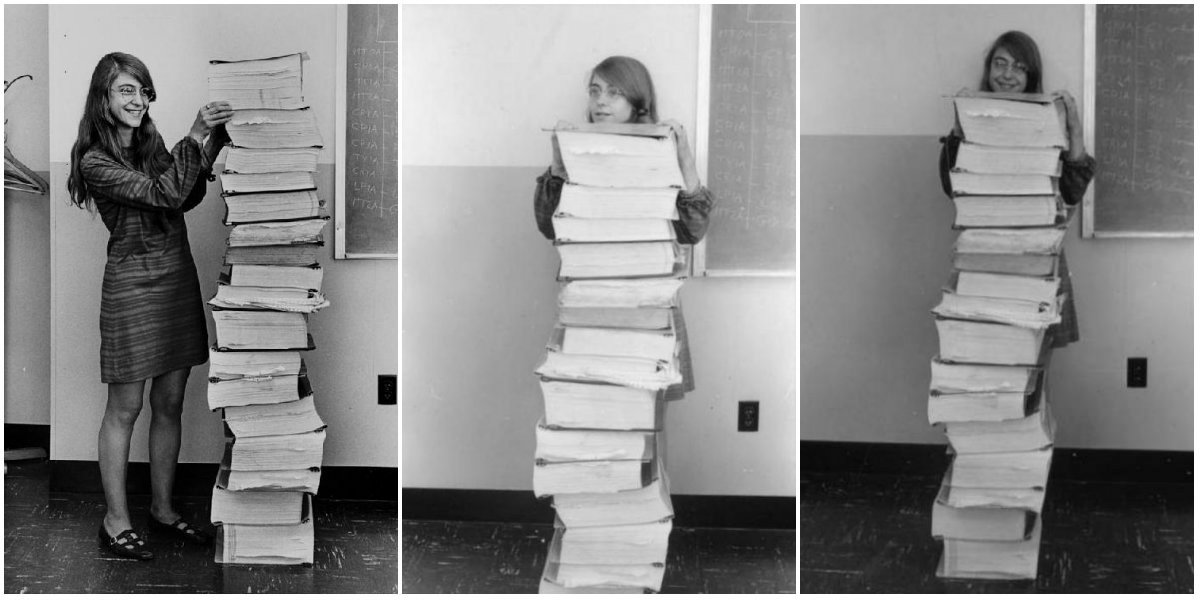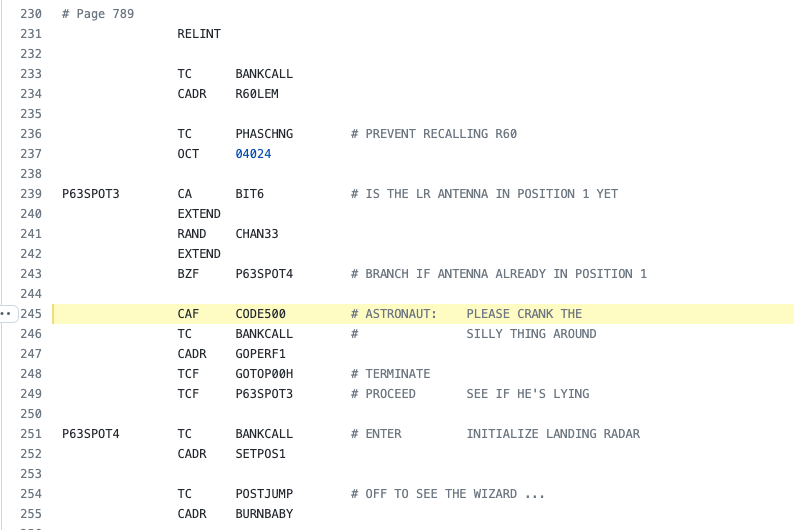Only thousands of lines of code made thousands of kilometers to the moon possible. One small step for man. One giant leap for software. And just by the way, behind that small step for man was, in fact, a woman.
Margaret Hamilton wasn’t exactly supposed to invent the modern concept of software and land men on the moon. After all, it was 1960, unfortunately not a time when women were encouraged to do high-powered technical work. Hamilton, a 24-year-old with an undergrad degree in mathematics, had acquired a job as a programmer at MIT, and the plan was for her to support her husband through his three years at Harvard Law. But the Apollo space program materialised and Hamilton began working on an epic feat of engineering that would help change the future of what was at the time thought to be humanly – and digitally – impossible.
Today, we explore the vital role code played in getting us into space as well as the many other places it could take us in the future.
The birth of code
The original document laying out the engineering requirements for the Apollo mission didn’t so much as mention the word software, MIT aeronautics professor David Mindell writes in his book Digital Apollo. “Software was not included in the schedule, and it was not included in the budget.”
As Hamilton and her colleagues programmed the Apollo spacecraft, they were also hatching what would become a $400 billion industry.
Once the code was solid, it was shipped off to a nearby Raytheon facility where a group of women threaded copper wires through magnetic rings (a wire going through a core was a 1; a wire going around the core was a 0). Forget about RAM or disk drives.
Without code, Neil Armstrong wouldn’t have made it to the moon. And without the software created by Hamilton, Eyles, and the team of MIT engineers, the computer would have been a dud. Software engineering, a concept Hamilton birthed, has found its way from the moon landing to nearly every human endeavor.

Where code is now
The code created for the Apollo mission is now available on Github. The code might be alien to most modern programmers, but features comments that provide a sense of what these pioneers were trying to achieve. The total weight of the whole program is slightly bigger than 2MB. Isn’t it fascinating that such a tiny piece of code could take us so far?

Source: GitHub
Programming languages like C and Java are now primarily used to operate the rovers exploring Mars. Space missions have become more ambitious and so has the code used to make it all possible. It’s hard to imagine what may be achievable in the decades to come. What will code look like in the future? Where could we go? What could we achieve? The possibilities are out of this world.
The future of code
The most important trend in programming for the foreseeable future will be using machine learning and artificial intelligence to automate much of coding. AI and machine-based learning can automate coding and help programmers write faster and better code. When combined with IDEs – software used by programmers when they are writing code in a specific platform, such as Visual Studio etc – it can save companies a lot of time and money.
Programmers will still need to learn new languages over the next decade. But watch this space because change is the only constant in the coding game. Doesn’t a career in coding seem quite attractive now?
Thanks to one space mission, the sky’s the limit for programmers, now and into the future. As coding becomes the most in-demand skill to have, the pace of human progress is increasing exponentially. Why not be part of the revolution? If you’re interested in a career in coding, your lift-off can happen right here.


